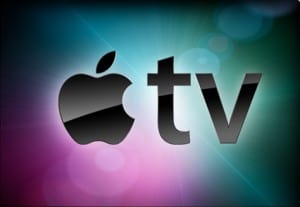 What made Apple the most valuable company on earth? Their relentless focus on creating extraordinary customer experience unveils opportunities others miss. They attack them using proprietary hardware and software embedded into elegant consumer products that ultimately disrupt long standing business models.
What made Apple the most valuable company on earth? Their relentless focus on creating extraordinary customer experience unveils opportunities others miss. They attack them using proprietary hardware and software embedded into elegant consumer products that ultimately disrupt long standing business models.
Because Steve Jobs told his biographer, Walter Isaacson that he’d finally “cracked TV” many think television is Apple’s next target.
Rupturing TV won’t be easy. The current stake holders have money, motivation and know Apple’s MO. You can just hear them whistling that Police classic:
Every breath you take
Every move you make
Every bond you break
Every step you take
I’ll be watching you
The Apple Rap Sheet
Competitors would describe Apple as a crafty conman who preys on unsuspecting industries with sexy hardware and then robs them blind. Their rap sheet starts with shattering the recording industry’s album model. Instead of paying for twelve songs to get one hit, iTunes let you just buy the hit. In a decade, recorded music sales plummeted 55% from $14.6B to $6.3B.
Next they stole handset control and add-on applications revenue from mobile carriers with the iPhone and the App Store ecosystem.
There should be a warning label on all Apple products: “Using this product may result in destruction of the current business model in your industry.”
Apple would argue all they want is to make today’s outdated TV experience better and user centered. In their view, insanely great products deliver life-changing benefits: a small cost for creating a better world.
Tell that to the broadcasters and cable company executives who see musicians riding tour buses 200 days a year to make up for lost recording earnings. Trade in our Gulfstreams for tour buses? Not on my watch.
Stunning Design is Not Enough
Apple will bring Bang and Olufsen styling to the flat panel then amp it up with SIRI search and voice control. They’ll add FaceTime for video calls and unleash the IOS developer community to create gizmos we’ve never thought of and a few we’ll wonder how we lived without.
Though premium priced, AppleTV won’t be outrageously expensive. Their smart iPad pricing demonstrates they know how to make profits and be competitive. It’s a given the marketing will be minimalistic and leverage their “think different” brand.
But the above only makes AppleTV the best “media center” available. The current TV add-ons such as the AppleTV “hockey puck”, Boxee and Slingbox deliver cool features but hardly a dramatic, new experience. Besides, they’re relatively cheap accessories compared to a flat panel.
To really change TV, Apple or someone else, has to cross the tipping point that switches control from broadcasters and distributers to users: See what you want, when you want and where you want.
The Sunset of Television: When, How & Who But Not If
Zillions of cable, satellite and web channels already shattered the networks’ distribution monopoly. TIVO clones let us time-shift when we watch as well as skip the 21 minutes of ads each hour. On-demand, streaming and web connectivity is built into every new DVD player.
Content creation has simultaneously exploded. Internet content such as Ted Talks and Kahn Academy compete head-to-head with Discovery Channel and PBS. America’s Funniest Videos and YouTube’s most popular uploads are basically identical. Sites like Xtranormal let anyone create animated content.
To further blur the playing field, content delivery specialists Hulu and Comcast are now producing original content. Even the screen monopoly enjoyed by the family room TV set is dissolving. It was nicked by the PC, gouged by cell phones and now slayed with tablets.
Chaos reigns. It’s easier to describe what’s happened than define where TV will land, how long the transition will take and who will win.
Apple’s Shrek Challenge
Apple held less than 5% of the PC market when it redefined music and later mobile. Back then, pirates had the music industry on life support and mobile was fixated on Blackberry’s 24/7 email addiction with minimal Internet access. Apple swelled to Shrek-like proportions with it’s success.
TV is in turmoil but growing. Viewing increased 22 minutes more per month in 2011. Healthy growth means that today’s players have money and see opportunity. That doesn’t mean the incumbents can muster the technology, transform their business models and keep control. It does mean they have plenty of incentive.
The size and dynamics of the TV market do not favor Apple. The flat panel market is about a tenth of the size of mobile phones. People didn’t trash their plasma panel for LED’s for the latest technology as can occur in mobile plus a family only needs one premium screen. Last, while it’s a problem that can be solved, flat panels are large which would challenge Apple store inventory space requirements, transport, etc.
This piece assumes that Apple will try to crack TV with a flat panel. Rather than speculate further on Apple’s entry, here are three criteria that any competitor revolutionizing TV has to address. By definition such a short the list is incomplete. I invite your comments and ideas.
Three Criteria for a User Centered World
1. Supports quality content creation
At Pixar, Steve Jobs saw firsthand the difference between Hollywood’s creative talent and Silicon Valley’s technical wizards. This distinction is critical and one technologists dismiss too quickly.
In tech, a proven path to success is incremental improvement. Be early to market and iterate one’s way to success using frequent revisions and end user testing. By doing so, technology gives us a richer pallet for creating, aggregating and distributing content.
But the skills for enlarging the pallet are different than those that use the pallet to craft an original movie or series. Imagination, not engineering, drives captivating characters, unique settings and compelling story lines. You can’t increment a TV series using half-finished shows. The best in tech and art creation put in 10,000 hours of practice but art has a higher voodoo factor – the unknowns are greater than in tech. Pilot audience ratings are far less predictive of Hollywood success than clickstream analysis at Google. At Pixar, Jobs saw this first hand (see The One Man Steve Jobs Didn’t Try to Control).
It’s unlikely that Apple would directly delve into content creation though their relationship with Disney is unique and could open the door for interesting experimentation that might change the current model.
Who pays and produces content will evolve. Hulu and Comcast’s toe dip into content creation, Ted Talks, etc. already point that way. Perhaps we’ll even see crowd sourced funding or direct artist to viewer plays as some comedians are trying.
Advertising will continue to carry a majority of the load be it through subscriptions, one-time fees and perhaps basic services may be incorporated into devices just as General Motors incorporates OnStar collision service into cars.
Bottom line: A TV without compelling content is virtually unplugged.
2. Enables anytime, anywhere viewing across “screens” regardless of size and location
HBO Go gives us a glimpse into the anytime, anywhere, any screen future. HBO subscribers can stream programming to their phone, tablets and game consoles. It has its quirks and hiccups but they’ll be sorted out soon enough.
All content will be delivered this way with payment schemes that offer aggregation by content types, producers, interests, etc. This is pretty close to what Apple has already done with music and to a lesser degree, released movies and recent TV episodes.
Content ownership versus rental may also change. To enable cross-device viewing, we’ll need more choices that fall between personal ownership and short term rental. Plans mimicking today’s mobile phone family plans may emerge that allow parents to share and steer parentally controlled content across family devices.
Bottom line: Apple’s ecosystem experience is a big plus but AppleTV won’t go big until it address offers a solution for all screens.
3. Expands the Experience
This is a tougher issue than it might sound. The promise of interactive television has been stalled on the edge of take-off for twenty years. The new 3D flat panels are not flying off store shelves.
That said, the IOS app developer universe will craft something really cool such as what I’ll call TweetTV. With TweetTV , you watch and tweet your real-time reactions to a show that are synchronized in the cloud to appear when your friends reach the same point in that show, no matter when/where/how they watch the same show. You could host an asynchronous SuperBowl party complete with social betting on every play.
Assume there are thousands ideas like this, many better and some that could really stick once we leave today’s one-to-many broadcast model.
Another experience expansion target is the programming guide. Have you ever pulled into a hotel late at night and tried to navigate an on screen channel guide? The experience screams that the distance between today’s onscreen program guides and internet search technology is at least a galaxy far, far away. Surely Apple’s SIRI (and Google as well) can begin to head towards a better alternative.
This is where Apple has a competitive advantage. Designing a complete user experience is in their DNA. Software, hardware and service distinctions common at other firms are de minimis at Apple. The potential of AppleTV combined with iCloud screams for apps that provide experiences across end points that start from users.
Bottom line: This has always been the potential ace up Apple’s sleeve.
The Missing Link: Can Tim Cook Lead Industry Disruption?
Steve Jobs brought a unique combination of passion and chutzpah that may truly be a once-in-a-generation phenomenon. Tim Cook’s demonstrated brilliance at internal business execution was a perfect complement to Jobs’ iconoclastic passion. The question is can Cook reach beyond Apple’s boundaries and lead business model innovation across a leery set of industry stakeholders.
Disruption is far easier to dissect and chronicle once after the fact. We’ll have to wait and see. Maybe Apple can crack TV but it’s still early in the second inning with no one on base.

 I'm Christopher Meyer - author of Fast Cycle Time, Relentless Growth and several Harvard Business Review articles.
I'm Christopher Meyer - author of Fast Cycle Time, Relentless Growth and several Harvard Business Review articles. 